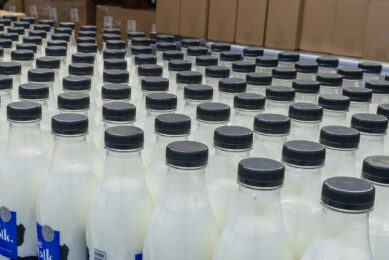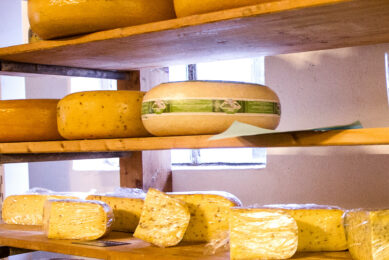Indian dairy minister opposes RCEP

Even though the Indian prime minister did not sign the Regional Comprehensive Economic Partnership (RCEP) with ASEAN & FTA members recently, opposition within the government has already raised a red flag against RCEP.
The dairy sector has been very vocal about this, while the Indian dairy minister Giriaj Singh asked the commerce ministry not to move forward.
The Regional Comprehensive Economic Partnership (RCEP) is a mega free trade agreement being negotiated among 10 ASEAN countries with their six FTA partners (India, China, Japan, South Korea, Australia, and New Zealand).

Even though India is the largest producer of milk production with 176.35 million tons recorded during 2017-18, its per capita consumption is just 10 liters, as compared to 40 liters consumed in developed nations.
The minister also said that even though India has the largest cattle population, the cost of milk production is very high, as it doesn’t use animal protein. In developed countries, animal protein is the main source of feed and thereby milk production is increased, if we allow milk imports from other countries, Indian dairy farmers will have to face huge losses, as it will not be able to compete with foreign players that will be selling milk with huge discounts.
India’s National Dairy Plan
In order to increase milk productivity in milch animals, the Indian government in 2018 under the National Dairy Plan (NDP) decided to spend USD 245 million.
The then agriculture and dairy minister, Radha Mohan Singh said that under the NDP, 530 sub-projects have been approved in 18 states for implementation by 169 state and district level cooperatives, producer companies, and livestock development boards. This comprises 62 sub-projects for animal breeding, 167 sub-projects for animal nutrition and 231 sub-projects for Village Based Milk Procurement Systems (VBMPS).
Under this 378.98 million high-quality semen doses have been produced, 2.99 million milch animals in 32,578 villages have been covered under the nutrition balancing programme, 2,593 bulk milk coolers, and 21,711 automated milk collection units were installed and 1.32 million additional farmers have been enrolled in 39,956 villages under the VBMPS, Radha Singh stressed.
The minister also said that though we are the largest producer of milk globally, dairy is still a backyard business for millions of farmers. These farmers treat dairy as a secondary source of income and close to 80 million rural households are engaged in milk production in India with a very high proportion being landless, small and marginal farmers.
If the dairy sector comes under RCEP, farmers will face a huge problem, as cooperatives will buy milk from importers and milk prices will come down drastically, impacting their daily life, the minister underlined.
Dairy industry worried
Indian dairy industry fears that if dairy products are covered under an RCEP deal, India would be forced to allow members of the bloc greater access to its market and have to phase out high tariffs to cap it 15% under the liberal tariff rate quotas (TRQs), which could be a disaster for locals and benefits only nations like New Zealand & Australia.
Many farmers organization has cautioned government about RCEP and have said that it would be suicidal if government includes dairy in the deal.
New Zealand eyes Indian dairy sector
New Zealand, which is a major exporter of dairy products is eyeing India primarily to sell milk powder and fat products.
In 2018, New Zealand exported 93.4% of milk powder, 94.5% of its butter, and 83.6% of its cheese production.
During his visit in November this year, New Zealand Minister for trade and export growth Damien O’Connor said that Indian dairy needs to use the advance technology and his country can help India achieve this.
New Zealand minister met Gujarat Cooperative Milk Marketing Federation (GCMMF) managing director, R S Sodhi Amul chairman where both the sides explored cooperation in artificial insemination, processing, tagging and other aspects and challenges, while New Zealand has advanced technology to address these aspects.
New Zealand’s dairy farmers are currently working with Indian farmers from Haryana. In a pilot project, over 300 milch cross-breed cows are being maintained using standards set by New Zealand. The milk produced here is sold in Delhi’s market.
In addition, New Zealand’s cooperative Fonterra is working with India’s retail giant Future Group, which uses Indian milk to develop and supply high-value consumer products using Fonterra’s technology.
India’s milk segment growth
According to India’s largest private dairy company, Hatsun Agro Products chairman and managing director, India’s growth in milk segment has been around 4% CAGR in the past few years and consumption growth has been expanding at 11% CAGR. This is expected for the next 20-25 years. India’s dairy market is expected to grow at a CAGR of 13% to 15% until 2019-20.
Join 13,000+ subscribers
Subscribe to our newsletter to stay updated about all the need-to-know content in the dairy sector, two times a week.










